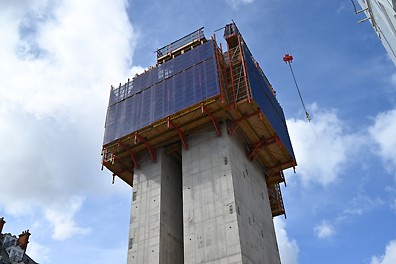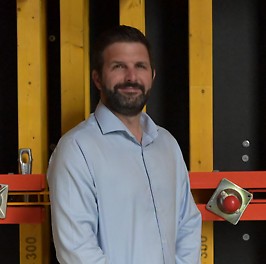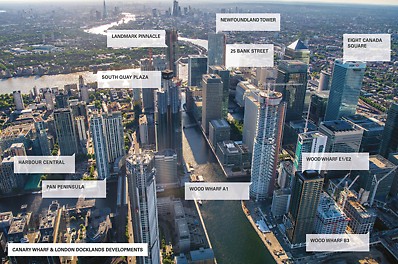
With available land in the capital increasingly scarce, the only way to build is upward. This is reflected in the Tall Buildings Survey 2025, which reports a 23% increase in applications for tall building construction in London from 2023 to 2024.
But it’s not just the capital that’s growing taller. Mills points to the surge in tall building construction across cities like Manchester, Birmingham and Leeds—highlighting why PERI has made this a key industry focus.
Since jumping into formwork technology almost 26 years ago, Mills has added numerous tall builds to his portfolio, playing a key role in delivering climbing formwork solutions for some of the most complex and high-profile projects such as the 67-storey ICE Condo towers in Toronto, and Newfoundland – a unique 60-storey skyscraper in Canary Wharf, London.
It was his experience with large-scale climbing projects across the Atlantic in Canada that made him the ideal choice to spearhead new high-rise opportunities at PERI UK back in 2016– a time when London’s privately owned financial district was undergoing major development.
After a successful four-year stint leading the central London sales team from 2020 to 2024, Mills explains that the challenging nature of high-rise projects drew him back to leading PERI UK’s climbing segment nationally.
“Most of the hard work is done before the start [of a tall building project] – early planning and engagement is key. It would be great to simply watch the core fly up,” says Mills. “But architects’ elaborate designs and structural changes often make it more complex.
The integration of formwork with other elements during tall building construction should not be underestimated. Mills recalls the first two phases of the South Quay Plaza site as among the most complex projects, since the contractor’s precast elements had to be integrated into the internal core walls of a large tower.


“We were working on phase two during COVID-19,” Mills recalls. “Adding to the technical challenges was the limited face-to-face contact with the customer and our engineers. However, through 3D modelling, we were able to spot clashes and any potential issues virtually.”
It’s not just digital technology that’s optimising how we construct. When questioned about jumpform technology’s place in the industry, Mills was quick to defend.
“For many high-rise commercial projects, high-spec finishes on the core are at the top of the agenda. Whether a contractor uses RECKLI liners or custom sized plywood sheeting, jumpform delivers the precision that slipform cannot currently match. It also minimises the margin for error, especially when bespoke architectural features come into play.”
The high-spec finish on tall building cores is only as good as the climbing system that is able to transport the formwork into position. The safer the system, the more efficient and accurate the build. Over half a year into his return to the high-rise segment, Mills faces the exciting task of successfully launching PERI’s latest RCS MAX system upgrade in the UK at the South Molton Triangle site—the first time it has ever been used on a project. He believes the system directly addresses the heightened focus on high-rise construction safety.
“RCS MAX introduced simultaneous multi-platform climbs, so we could eliminate the risk of leading edges altogether. This latest module ensures the majority of the formwork is connected to the jumpform throughout the climb. This means we can reduce crane use and enable contractors to continue jumping safely even when the crane is winded off. South Molton is a special project for us as it’s the first time we are using the new MAX module 2 on a large internal stair shaft with no requirement for crane climbing.”
The evolution of our climbing capabilities doesn’t stop there. With support from our headquarters in Germany, Mills is optimistic about the enhanced sustainable solutions PERI UK will be able to offer customers, as we focus on standardisation, improving the current portfolio, developing new product innovations, and promoting reuse to pave the way forward.
